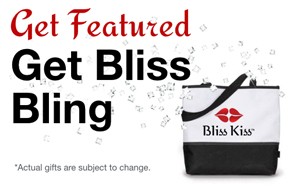NAIL FILES
Nail Files With Polish
Hi Ana,
I’m hoping you could give your input about a post from a well known Facebook page. I don’t quite feel comfortable with the statement and it’s actually put some doubt in my mind as to filing my nails. I’ll be honest, I do file my nails while wearing polish… Is it really that harmful? I use a Mont Bleu crystal file. Thank you ~Juanita
ANSWER
Hi Juanita,
Thank you very much for sending me this important question. Dictating this Facebook post to include in this article made me cringe and want to hiss and spit. The advice is incorrect on so many levels.
Let’s take a look at this post which is built on misinformation. The text below that is in red is incorrect, and is what I will address in the rest of this article.
Are you a nail polish wearer who files your nails down, or even to shape them while wearing varnish? I know some think this is a good habit, but truth be told it is harmful for your nails. Your nails are made up of layers upon layers of straw–like columns or fibres running from your cuticles to the end of the nail. The hard nail we can see it is of course dead tissue, which cannot repair itself for this reason we have to be very careful not to weaken or damage these top layers in anyway.
In fact, nail polish does glue the straw–like columns together in order to prevent splitting however it only “protects” them slightly and on the very outside layer. What about all the underlying layers that help to provide your nails with strength, flexibility, and a healthy appearance? They will become weak and damaged.
Let’s chat about a nail file. So many bloggers say they swear by their crystal files. I file with an emery board 180/240 grit to seal the ends of my nails. If they aren’t sealed almost every day, snags can occur and they might catch on to things. Although the crystal file feels only slightly “gritty” it still leaves those white shavings that everyone has experienced before while filing. Those savings are evidence that you’re grabbing, ripping, and tearing the nail fibers, thus weakening them. This can lead to several issues such as: cracking, splitting, breaking, etc. This is also the reason why you are advised to only file in one direction with conventional files or emery boards. The damage would be much greater if you filed (by grabbing and tearing the fibers) in both directions.
Is Filing Nails with Polish Harmful?
Lord, no!!!
Let me give you another way to look at this. Imagine a wooden fence that’s painted white. The wood is dead. The paint on the surface of the wood protects each board from absorbing water that causes warping, swelling, and splintering.
Let say for example, you realize that you need to replace one of the boards in your fence, and you discover that it is too long. Now you need to either cut the board or sand it down to the right length. Is the paint on that board going to damage the wood while you’re sanding?
The answer is a big. fat. no.
If anything, the paint on the edges of the board could chip while you’re sanding the wood.
Ok, transitioning back to filing fingernails with polish…
When I file my polished nails–sometimes the nail polish chips. I never see damage on my actual nail plate.
The reason you may see your polish chip when filing or trimming your nails is that the nail polish is no longer bonded to your nail plate.
Any polish that is still solidly bonded to your nail plate will not chip when you cut or file your nails.
Is The Nail Made Of Straw-Like Columns?
No, nope, and let me say it one more time—no!
To say “straw–like columns or fibres running from your cuticles to the end of the nail” demonstrates a lack of understanding of nail plate anatomy.
Honestly, this description of “straw-like columns” makes me think of the hay I feed my horses. This is not at all similar to the structure of your nails.
So let’s take a look at what my mentor Doug Schoon says. He’s been a nail scientist for 30 years, and is the author of Nail Structure and Product Chemistry. His description is fairly scientific, but I think you deserve the truth.
Keratin is the structural protein for nails. Like all proteins, keratin is made of long chains or strands of amino acids, joined together like pearls on a microscopic necklace. A typical keratin strand contains between 300 and 500 amino acids linked into a long chain. These single chains prefer to exist as loosely coiled strands. Almost two-thirds of the keratin found inside the nail cells exist as extremely tiny, coiled strands. Dozens of these coiled strands stack neatly into tight bundles to create tiny fibers or fibrils of keratin. These fibrils can be seen only under the most powerful electron microscopes. At these extremely high magnifications they look like tiny whiskers embedded in a semisolid gel. All of this is encased in a clear sack to create a nail cell. These fibrous filaments are so narrow that a bundle of 2,000 would only be as thick as a single human hair. Even so, each fibril contains approximately half a million amino acid molecules, and each nail plate contains hundreds of millions of fibrils. That’s a lot of amino acids in each nail!
The remaining one third of the keratin is much softer and more gel like in consistency. This type of keratin does not form fibers, but instead creates a firm supporting bed that encases and supports the fibrils. The keratin fibers are arranged inside the cells in neatly stacked rows of ‘logs” (i.e., like logs in a log cabin) that lie parallel to the free edge of the nail. The logs would seem to be rolling along toward the tip of the nail plate as the cells slowly flow toward the free edge. -Nail Structure and Product Chemistry
Did you catch that last couple of sentences?!!
Fibers stacked like logs that run from sidewall to sidewall—NOT from cuticle to free edge.
If we were to say there is a “grain” to the nail plate, it goes in the same direction as the free edge. So if you are filing your nails shorter, you are going with the grain, rather than against it, as suggested by the Facebook author in Juanita’s question.
What is Tissue?
The Facebook author wrote, “…The hard nail we can see it is of course dead tissue.”
This one is making my eye twitch!
Nails are NOT tissue. Body tissue requires a blood supply.
An article at study.com states, “Human body tissue is another way of describing how our cells are grouped together in a highly organized manner according to specific structure and function. These groupings of cells form tissues, which then make up organs and various parts of the body. For example, it is easy to see and feel muscle in the body. Muscle is one of the four types of human body tissue.” [Source: study.com/academy/lesson/what-is-human-body-tissue-definition-types-examples.html]
According to Wikipedia, “A nail is a horn-like envelope covering the tips of the fingers and toes in humans, most non-human primates, and a few other mammals. Nails are similar to claws in other animals. Fingernails and toenails are made of a tough protective protein called keratin. This protein is also found in the hooves and horns of different animals….Several layers of dead, compacted cells cause the nail to be strong but flexible.” [Source: en.wikipedia.org/wiki/Nail_(anatomy)]
Does Filing Damage the Top Surface Of Nails?
The Facebook author wrote, “…for this reason we have to be very careful not to weaken or damage these top layers in anyway.”
BUFFING damages the top layers of the nail plate, not filing your nails shorter.
The information in this Facebook article strongly suggests lack of research and understanding.
Isn’t this Facebook post about filing the free edge?
What Glues Nail Cells Together?
The author wrote, “…nail polish does glue the straw–like columns together”…
No—as many of you know from reading my previous articles on nail health, anatomy, and care, body oil created by the pink nail bed is pushed up through the nail plate. The oil is what “glues” your nail layers together (not nail polish).
Nail polish only provides temporary layers of flexible strength to the nail plate. It also reduces water absorption, which is a major cause of peeling.
Remember the white fence analogy that I included at the top of this article?
The paint on the boards only serves to protect the wood from swelling with water. Nail polish acts similarly on your nails.
Are The Underlying Layers Weak?
The Facebook author wrote, “…What about all the underlying layers that help to provide your nails with strength, flexibility, and a healthy appearance? They will become weak and damaged.”
This just doesn’t fit with the body of knowledge about nail anatomy and nail structure (Check out this article for more information on nail anatomy).
Nail polish has nothing to do with the strength and flexibility of the underlying layers of the nail plate.
The part of the nail that is attached to the pink nail bed does not require strength or flexibility. It does require a perfect blend of approximately 18% moisture and 5% body oil to prevent the nail from drying and cracking while it is on your finger.
Once the nail plate grows past your fingertip, then it is no longer being nourished by the nail bed. So, when you wash your hands, you strip the oils from your nail tips. This causes them to be dry and brittle.
What’s The Best Nail File?
The Facebook author wrote “… So many bloggers say they swear by their crystal files. I file with an emery board 180/240 grit to seal the ends of my nails…”
The short answer to which nail file is the best is … the nail file you like and works for you.
There is an exception to this short answer–The only nail file you want to stay away from is 100 grit. This is a very coarse nail file and should only be used to file down hard acrylic.
The bloggers who swear by their crystal nail files are seeing the results of nail files that work with their nail anatomy. I personally use crystal nail files. I also like different grit emery boards. Each one has its own purpose.
Sealing The Ends?
According to the Dictionary, the two verb definitions that relate to this topic are:
- a device or substance that is used to join two things together so as to prevent them from coming apart or to prevent anything from passing between them.
- apply a nonporous coating to (a surface) to make it impervious: “seal the finish with a satin varnish.”
So, if we want to use the word “seal” in the correct context, then a nail file does not seal—nail polish does.
If you were to sand down the varnish on your dining room table, sanding would not seal the wood. It would expose it, making it vulnerable to water and other damage.
The purpose of a nail file is not to seal them. Its purpose is to shorten and smooth the edges.
Nail Shavings?
The author says, “Although the crystal file feels only slightly “gritty,” it still leaves those white shavings”
This is another example of inaccurate information.
If the assertion that a crystal file “still” leaves white shavings would imply that other nail files leave white shavings, too. The author is arguing against the use of crystal nail files because it leaves behind shavings.
Well, the truth is that ALL nail files–crystal or whatever–can leave behind nail shavings.
Nail Mutilation and Torture?
The author writes, “…Those shavings are evidence that you’re grabbing, ripping, and tearing the nail fibers, thus weakening them.”
Grabbing, ripping and tearing them…Well, technically this is correct. It’s a rather dramatic description of filing your nails. But does it weaken them? No!
Does getting a haircut weaken your hair? Nope.
It removes damaged ends, or just shortens your hair to your desired length or style. The process of cutting your hair is similar to filing your nails.
The shavings you see when you file with a crystal (or any) nail file are just nail keratin cells that are still attached to the nail plate.
Are we supposed to stop filing our nails because we are shredding the tips?
The author also says, “…This can lead to several issues such as: cracking, splitting, breaking, etc.”
Shavings don’t cause cracking, splitting, breaking. Thin nails, dry nails, flat nails, curved nails, matrix damage, and life in general can cause all of those problems.
This Way or That Way?
The author writes, “…you are advised to only file in one direction… The damage would be much greater if you filed in both directions.”
Recently, Doug Schoon broke out his trusty electron microscope to see if there was any difference between the free edges of a nail when comparing filing in one direction, versus see-sawing back-and-forth. The result was a resounding NO DIFFERENCE.
Of course, this made me very, very happy, since I have been see-saw filing all my life and have never seen evidence of my nails being mutilated or tortured.
In Conclusion
It is perfectly okay to file your nails while they are polished. In fact, many people, myself included, find it easier to shape their nails with polish.
The color and contrast the polish makes it easier to see if you are creating a crooked shape. So, in my opinion, that’s a good thing.
If you love your crystal nail file like I do, you don’t need to worry. It won’t damage your nails.
The biggest takeaway from this Facebook post is that it’s so important to know who you can trust to provide accurate and educational information.
Facebook and the Internet are saturated with misinformation, myths, and bad advice.
This is why I continually refer back to Doug’s book, Nail Structure and Product Chemistry for answers when people ask me questions.
And if I don’t know the answer, I know I can rely on Doug’s years of experience and dedication to nail science to I can help to shine the light of truth on inaccurate information for you.

 If Ana features your question in an “Ask Ana” article, you’ll get an email from us within a week asking you for your shipping address. Woohoo! This is our way of thanking you for asking a great question and helping deliver more value to our NailCareHQ readers, Blissettes and the Bliss Kiss™ community.
If Ana features your question in an “Ask Ana” article, you’ll get an email from us within a week asking you for your shipping address. Woohoo! This is our way of thanking you for asking a great question and helping deliver more value to our NailCareHQ readers, Blissettes and the Bliss Kiss™ community.